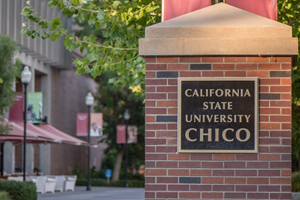California State University right for you? Find out and Study In California State University, California State University fees, California State University course list, California State University Ranking, Courses, Fees. Study In California State University, California State University course list, California State University Fees, California State University USA, California State University USA Study In California State University, California State University fees, California State University course list, California State University Ranking, Courses, Fees.
California State University
Countries
Visitors
Visa Granted
Subjects
Today’s California State University system is the direct descendant of the Minns Evening Normal School, a normal school in San Francisco that educated the city’s future teachers in association with the high school system. The school was taken over by the state in 1862 and moved to San Jose and renamed the California State Normal School; it eventually evolved into San Jose State University. A southern branch of the California State Normal School was created in Los Angeles in 1882.
In 1887, the California State Legislature dropped the word “California” from the name of the San Jose and Los Angeles schools, renaming them “State Normal Schools.” Later Chico (1887), San Diego (1897), and other schools became part of the State Normal School system. However, these did not form a system in the modern sense, in that each normal school had its own board of trustees and all were governed independently from one another. In 1919, the State Normal School at Los Angeles became the Southern Branch of the University of California; in 1927, it became the University of California at Los Angeles (the “at” was later replaced with a comma in 1958). In May 1921, the legislature enacted a comprehensive reform package for the state’s educational system, which went into effect that July. The State Normal Schools were renamed State Teachers Colleges, their boards of trustees were dissolved, and they were brought under the supervision of the Division of Normal and Special Schools of the new California Department of Education located at the state capital in Sacramento. This meant that they were to be managed from Sacramento by the deputy director of the division, who in turn was under the State Superintendent of Public Instruction (the ex officio director of the Department of Education) and the State Board of Education. By this time it was already commonplace to refer to most of the campuses with their city names plus the word “state” (e.g., “San Jose State,” “San Diego State,” “San Francisco State”).

Campus
Among the institutions which donated matching funds was the local Grange, which was heavily involved in the early establishment of the university. As part of this effort, in the spring of 1874 Grange No. 6 held a picnic and planting event at the corner of College Avenue and West Laurel Street, and later plowed and seeded 20 acres (80,000 m²) of wheat on a nearby field. Within several months, the university’s first building, a 16-foot (4.9 m)-by-24-foot red brick building nicknamed the “Claim Shanty” was finished, providing the first tangible presence of the institution in Fort Collins.
After Colorado achieved statehood in 1876, the territorial law establishing the college was required to be reauthorized. In 1877, the state legislature created the eight-member State Board of Agriculture to govern the school. Early in the 21st century, the governing board was renamed the Board of Governors of the Colorado State University System. The legislature also authorized a railroad right-of-way across the campus and a mill levy to raise money for construction of the campus’ first main building, Old Main, which was completed in December 1878. Despite wall cracks and other structural problems suffered during its first year, the building was opened in time for the welcoming of the first five students on September 1, 1879 by university president Elijah Evan Edwards. Enrollment grew to 25 by 1880.
During the first term at Colorado Agricultural College in fall 1879, the school functioned more as a college-prep school than a college because of the lack of trained students. Consequently, the first course offerings were arithmetic, English, U.S. history, natural philosophy, horticulture and farm economy. Students also labored on the college farm and attended daily chapel services. The spring term provided the first true college-level instruction. Despite his accomplishments, Edwards resigned in spring 1882 because of conflicts with the State Board of Agriculture, a young faculty member, and with students. The board’s next appointee as president was Charles Ingersoll, a graduate and former faculty member at Michigan State Agricultural College, who began his nine years of service at CAC with just two full-time faculty members and 67 students, 24 of whom were women.
California State University Course List
ELIGIBILITY CRITERIA IN GENERAL

COUNTRIES


